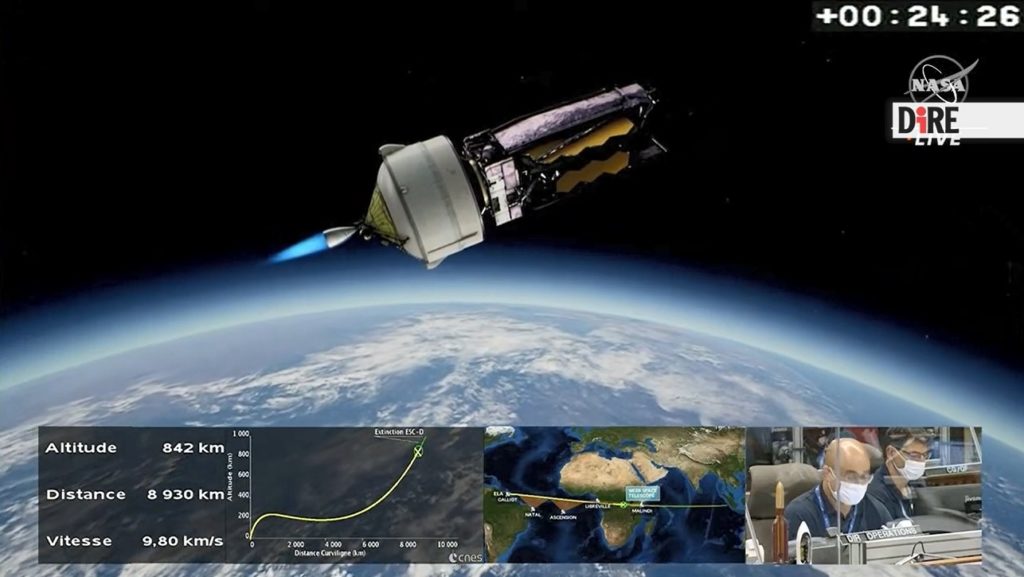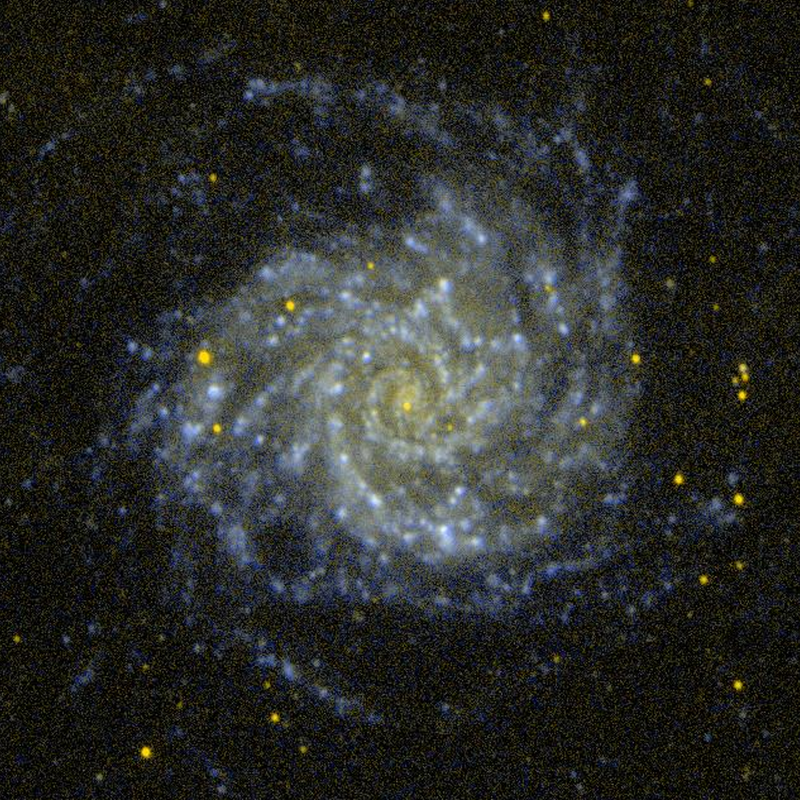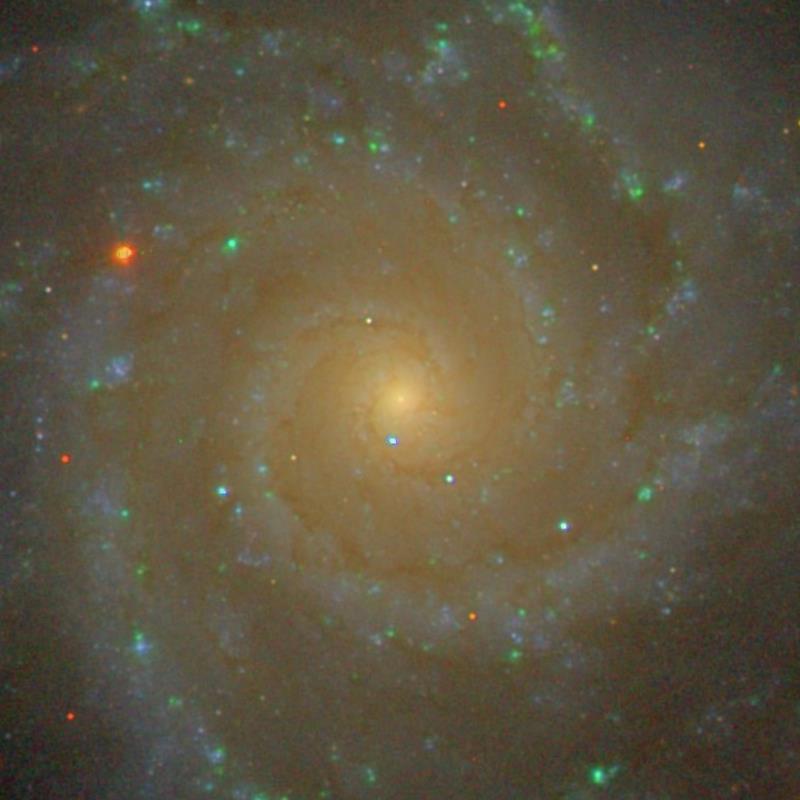
UN’ IMMAGINE DEL TELESCOPIO SPAZIALE JAMES WEBB LANCIATO IN ORBITA IL 25 DICEMBRE 2021: il telescopio spaziale più potente mai costruito, EREDE DEL TELESCOPIO HUBBLE.
sotto prosegue sul telescopio Webb
IMMAGINE E SPIEGAZIONE DA :
https://www.dire.it/10-01-2022/697703-il-viaggio-del-james-webb-space-telescope/
da siti vari –sono indicati
Secondo gli scienziati l’universo è formato in gran parte da un vuoto carico di energia, che sta accelerando l’espansione del cosmo.

Un’immagine della galassia Fantasma M74, frutto dei dati provenienti dai telescopi spaziali James Webb e Hubble (ESA/Webb, NASA & CSA, J. Lee and the PHANGS-JWST Team; ESA/Hubble & NASA, R. Chandar Acknowledgement: J. Schmidt)
foto e titolo
da : https://www.internazionale.it/magazine/paul-m-sutter/2023/02/23/la-potenza-del-nulla
un’immagine dal sito della dott. che l’ha pubblicata per prima: 19 LUGLIO 2023- dal telescopio Webb
Judy Schmidt-Glowing Dust of NGC628
NASA / ESA / CSA / Judy Schmidt
segue sotto
da :
FANPAGE, 20 LUGLIO 2023
https://www.fanpage.it/innovazione/scienze/il-misterioso-centro-vuoto-della-galassia-fantasma-e-un-dedalo-di-gas-in-un-sublime-scatto-del-webb/
Il misterioso centro vuoto della Galassia Fantasma e un dedalo di gas in un sublime scatto del Webb
Dopo le prime immagini il Telescopio Spaziale James Webb continua a stupire: nel nuovo, meraviglioso scatto i dettagli mai visti della Galassia Fantasma.
A cura di Andrea Centini
Gli scienziati della NASA hanno diffuso una nuova, freschissima immagine catturata dal Telescopio Spaziale James Webb, che mostra la Galassia Fantasma (M74 o NGC628) con un dettaglio semplicemente sublime.
Lo scatto è stato pubblicato sul profilo Flickr della dottoressa Judy Schmidt, specialista in post produzione di immagini astrofotografiche e ricercatrice presso il PHANGS (acronimo di Physics at High Angular resolution in Nearby GalaxieS) Survey, un progetto di ricerca internazionale volto a studiare i legami fra le stelle e il gas molecolare freddo delle galassie a spirale, come lo è la splendida M74.
L’obiettivo, in parole semplici, è rilevare la formazione stellare dall’interazione tra il gas collassato e le polveri riscaldate che orbitano nel cuore galattico. La Galassia Fantasma si trova a 32 milioni di anni luce dalla Terra, nella costellazione dei Pesci; è un oggetto piuttosto debole se osservato da un piccolo telescopio “da giardino”.
Come specificato, il dettaglio di M74 catturato dal Webb lascia senza parole. La galassia a spirale risultava già meravigliosa nelle immagini immortalate dal Telescopio Spaziale Hubble, ma l’occhio del nuovo strumento – che opera nell’infrarosso – è molto più sensibile e riesce ad osservare attraverso le polveri, mostrando ciò che è celato dietro di esse.
Ciò che osserviamo è una fitta rete di gas e polveri che interagiscono con dettagli senza precedenti.
Nello specifico, si osservano le emissioni degli idrocarburi aromatici policiclici, oltre a un misterioso centro vuoto. L’immagine pubblicata su Twitter (che vedete qui in basso) risulta di colore viola proprio a causa delle emissioni di questi idrocarburi, mentre l’immagine di Schmidt ha più colori (falsi colori) per via dei tre filtri nel medio infrarosso applicati allo strumento MIRI del James Webb.
CONTINUA SUL LINK SOTTO:
FANPAGE, 20 LUGLIO 2023
https://www.fanpage.it/innovazione/scienze/il-misterioso-centro-vuoto-della-galassia-fantasma-e-un-dedalo-di-gas-in-un-sublime-scatto-del-webb/

Fotografia di M74 del telescopio Hubble. In basso a sinistra è visibile la supernova 2013ej.
per chi si interessa e sa l’inglese:
ESO’s PESSTO survey has captured this view of Messier 74, a stunning spiral galaxy with well-defined whirling arms. However, the real subject of this image is the galaxy’s brilliant new addition from late July 2013: a Type II supernova named SN2013ej that is visible as the brightest star at the bottom left of the image. Such supernovae occur when the core of a massive star collapses due to its own gravity at the end of its life. This collapse results in a massive explosion that ejects material far into space. The resulting detonation can be more brilliant than the entire galaxy that hosts it and can be visible to observers for weeks, or even months. PESSTO (Public ESO Spectroscopic Survey for Transient Objects) is designed to study objects that appear briefly in the night sky, such as supernovae. It does this by utilising a number of instruments on the NTT (New Technology Telescope), located at ESO’s La Silla Observatory in Chile. This new picture of SN2013ej was obtained using the NTT during the course of this survey. SN2013ej is the third supernova to have been observed in Messier 74 since the turn of the millennium, the other two being SN 2002ap and SN 2003gd. It was first reported on 25 July 2013 by the KAIT telescope team in California, and the first “precovery image” was taken by amateur astronomer Christina Feliciano, who used the public access SLOOH Space Camera to look at the region in the days and hours immediately before the explosion. Messier 74, in the constellation of Pisces (The Fish), is one of the most difficult Messier objects for amateur astronomers to spot due to its low surface brightness, but SN2013ej should still be visible to careful amateur astronomers over the next few weeks as a faint and fading star. Links PESSTO (the “Public ESO Spectroscopic Survey of Transient Objects”)

M74 (UV – GALEX)
– en:WikiSky‘s snapshot tool –

M74 (Mount Lemmon SkyCenter Schulman Telescope)
– http://www.caelumobservatory.com/gallery/m74.shtml

M74 (SDSS DR14)
– http://skyserver.sdss.org/dr14/SkyServerWS/ImgCutout/getjpeg?TaskName=Skyserver.Chart.Image&ra=024.174050&dec=+15.783461&scale=0.3&width=800&height=800&opt=&quer

M74 (JWST)
– https://esawebb.org/images/potm2208a/
This image from the NASA/ESA/CSA James Webb Space Telescope shows the heart of M74, otherwise known as the Phantom Galaxy. Webb’s sharp vision has revealed delicate filaments of gas and dust in the grandiose spiral arms which wind outwards from the centre of this image. A lack of gas in the nuclear region also provides an unobscured view of the nuclear star cluster at the galaxy’s centre. M74 is a particular class of spiral galaxy known as a ‘grand design spiral’, meaning that its spiral arms are prominent and well-defined, unlike the patchy and ragged structure seen in some spiral galaxies. The Phantom Galaxy is around 32 million light-years away from Earth in the constellation Pisces, and lies almost face-on to Earth. This, coupled with its well-defined spiral arms, makes it a favourite target for astronomers studying the origin and structure of galactic spirals. Webb gazed into M74 with its Mid-InfraRed Instrument (MIRI) in order to learn more about the earliest phases of star formation in the local Universe. These observations are part of a larger effort to chart 19 nearby star-forming galaxies in the infrared by the international PHANGS collaboration. Those galaxies have already been observed using the NASA/ESA Hubble Space Telescope and ground-based observatories. The addition of crystal-clear Webb observations at longer wavelengths will allow astronomers to pinpoint star-forming regions in the galaxies, accurately measure the masses and ages of star clusters, and gain insights into the nature of the small grains of dust drifting in interstellar space. Image credit: ESA/Webb, NASA & CSA, J. Lee and the PHANGS-JWST Team. Acknowledgement: J. Schmidt

– http://hubblesite.org/newscenter/newsdesk/archive/releases/2006/01/ https://www.spacetelescope.org/news/heic0601/
In one of the most detailed astronomical images ever produced, NASA/ESA’s Hubble Space Telescope captured an unprecedented look at the Orion Nebula. … This extensive study took 105 Hubble orbits to complete. All imaging instruments aboard the telescope were used simultaneously to study Orion. The Advanced Camera mosaic covers approximately the apparent angular size of the full moon. Coordinates Position (RA): 5 35 9.73 Position (Dec): -5° 24′ 50.32″ Field of view: 30.03 x 30.03 arcminutes Orientation: North is 0.0° left of vertical Colours & filter Band Wavelength Telescope Optical B 435 nm Hubble Space Telescope ACS Optical V 555 nm Hubble Space Telescope ACS Optical H-alpha 658 nm Hubble Space Telescope ACS Infrared I 775 nm Hubble Space Telescope ACS Infrared Z 850 nm Hubble Space Telescope ACS Notes: Additional observational data from the WFI instrument on the ESO.MPG 2.2-metre telescope.
IMMAGINI E TESTI IN INGLESE RELATIVI DA:
https://it.wikipedia.org/wiki/M74_%28astronomia%29

un’altra immagine del telescopio spaziale Spitzer


immagini dal loro Facebook —
link:::
Chi ha paura del buio?
https://www.facebook.com/NextSolarStorm
Sembra una scena alla Stranger Things, ma è ancora meglio: un’immagine fresca fresca di James Webb! Cioè, vi rendete conto? Dettagli, dettagli pazzeschi ovunque!
Stiamo osservando la parte centrale della galassia M74 (o NGC 628 se preferite), una splendida galassia a spirale grande circa come la nostra Via Lattea a una trentina di milioni di anni luce da noi nella costellazione dei Pesci. Questa è una galassia che avevano già osservato anche Hubble nel visibile e Spitzer sempre nel medio infrarosso, ma il dettaglio di questa immagine è semplicemente inarrivabile.
Leviamoci subito una cosa di torno: i colori sono finti. Non sono mappati in modo da assomigliare ai colori che vedrebbe Hubble, per intenderci. Però l’immagine è a colori, nel senso che per ottenerla sono stati usati tre filtri nel medio infrarosso dello strumento MIRI montato a bordo del telescopio. Essendo luce infrarossa, la mappa cromatica non può che essere arbitraria; alcune mappe però funzionano meglio di altre per scopi specifici. Per esempio qui vengono messi in risalto gli intricatissimi dettagli delle nubi di gas e polveri del centro di M74. E che dettagli, gente! In particolare, le lunghezze d’onda catturate tracciano le emissioni degli idrocarburi aromatici policiclici.
Essendo un’immagine recentissima (catturata appena un paio di giorni fa!) gli scienziati non l’hanno ancora studiata per bene, ma è chiaro che rappresenta una miniera di informazioni per capire meglio come si distribuisce il gas in una galassia a livello locale. E poi c’è quella misteriosa regione vuota centrale, tutta da studiare.
L’universo è sempre stato meraviglioso, e ora con James Webb lo è un po’ di più.
-Filippo
Credits: NASA/ESA/CSA/STSc/Judy Schmidt





L’infinitamente grande mi fa un po’ paura: è come essere sul bordo di un baratro assolutamente sconosciuto.